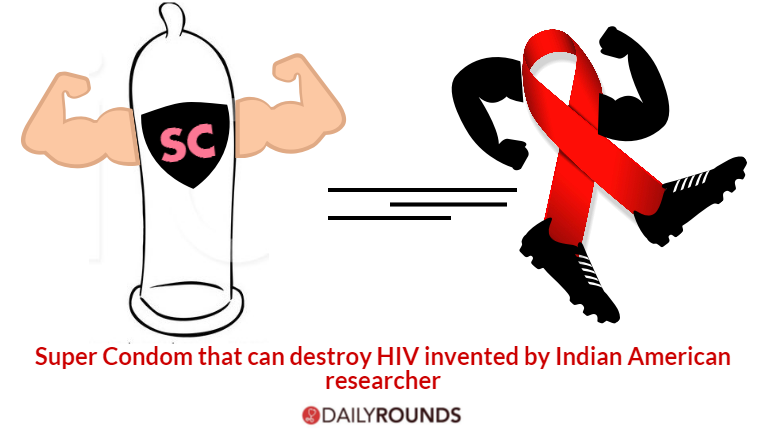
Super Condom that can destroy HIV invented by Indian American researcher
The breakthrough invention of a ‘super condom’ was achieved by a team of researchers at the Texas A&M Health Science Center’s Irma Lerma Rangel College. The research team was headed by an Indian American researcher, Professor Mahua Choudhury. This invention has opened an innovative way to prevent the spread of HIV and AIDS by killing the virus through antioxidants contained in the condom.
This super condom is made of an elastic polymer called hydrogel, and includes plant-based antioxidants that have anti-HIV properties. The antioxidant quercetin enmeshed in the hydrogel design can prevent the replication of HIV. If the condom breaks, the quercetin would be released for additional protection.
Dr. Choudhury, who completed Molecular Biology, Biophysics and Genetics in India got her PhD in the US and has been researching diabetes and the obesity epidemic since. She was one among the 54 people who were awarded the Bill & Melinda Gates Foundation’s “Grand Challenge in Global Health” grant. This year’s challenge was to develop a latex free condom to help battle the epidemic of HIV.
The researchers developed this condom aiming to increase global use of condoms as a way to prevent the spread of HIV and AIDS. ‘This super condom can not only help fight against HIV and may prevent unwanted pregnancy or sexually transmitted diseases as well. If we succeed, this will revolutionize the HIV preventive initiative,’ she said.
Though the condom has already been created, the only thing keeping it from going to the market is the approval on its patent application. The researchers hope to test the condom within the next six months. Once approved, the ‘super condom’ would help battle the HIV epidemic, which is currently affecting over 35 million people in the world. Dr. Choudhury positively asserted, “‘Once released, the new condom will eventually be made available to everyone, including those in rural areas, where these types of resources are limited,’
